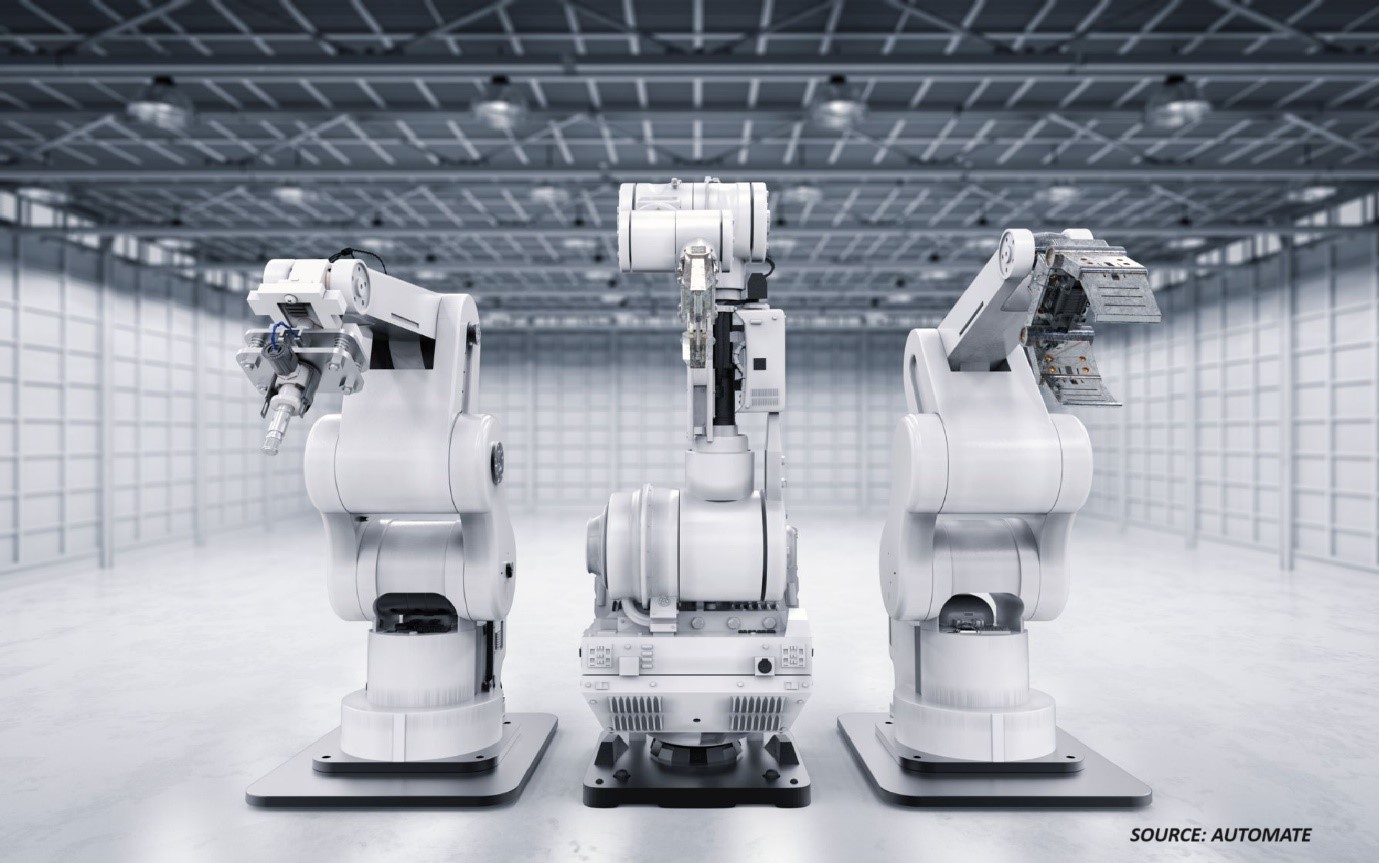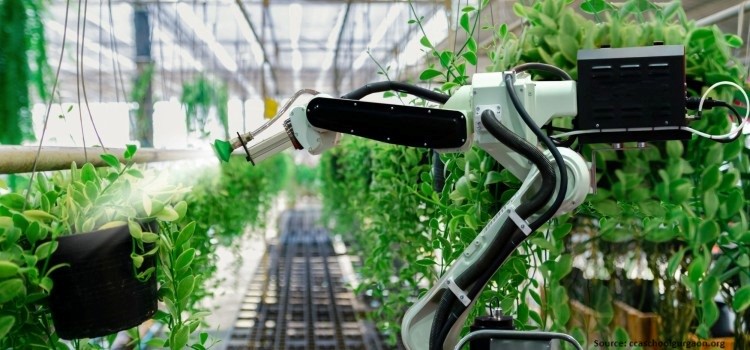
Sweden Wafer Handling Robots Market by Product Type (Vacuum Wafer Handling Robots and Atmospheric Wafer Handling Robots), by Number of Arms (Single Arm and Dual Arm), by Robot Type (Linear Robots, SCARA Robots, Articulated Robots, Cylindrical Robot, and Others), by Operation (Motor Driven and Belt Driven), by Installation (Free Standing and Integrated), by Wafer Size (Up to 100 mm, 150 mm, 200 mm, 300 mm, and Above 300 mm), by Semiconductor Process (Oxidation (Deposition), Lithography, Etching, Cleaning, Polishing, Inspection & Testing, and Assembly & Packaging), by End Use (Integrated Device Manufacturer (IDM) and Foundries) – Opportunity Analysis and Industry Forecast, 2024–2030
Industry: ICT & Media | Publish Date: 22-May-2024 | No of Pages: 169 | No. of Tables: 132 | No. of Figures: 97 | Format: PDF | Report Code : N/A
Sweden Wafer Handling Robots Market Overview
The Sweden Wafer Handling Robots Market size was valued at USD 3.8 million in 2023, and is predicted to reach USD 9.3 million by 2030, at a CAGR of 12.8% from 2024 to 2030. Also, the market size was 54.0 units in 2023, and is predicted to reach 186.0 units by 2030, with a CAGR of 18.3% from 2024 to 2030. A wafer handling robot represents a specialized robotic solution designed to streamline the complex procedures inherent in semiconductor manufacturing. These robots demonstrate exceptional proficiency in executing precise movements and positioning tasks with fragile semiconductor wafers.
Their significance lies in their pivotal role in the creation of top-tier integrated circuits and microelectronic devices. Operating within pristine cleanroom environments, they incorporate a diverse range of end effectors, sensors, and vision systems to securely grasp, inspect, and manipulate wafers, all while mitigating the risks of damage or contamination. By seamlessly integrating with other fabrication equipment, these robots not only boost operational efficiency and minimize errors but also foster the consistent production of cutting-edge semiconductor technologies that power an extensive array of contemporary devices.
Increasing Production of Electric Vehicles Fuel the Growth of the Sweden Wafer Handling Robots Market
Due to their critical role in semiconductor manufacturing, the increasing production of electric vehicles (EVs) is driving up demand for wafer handling robots. As EVs rely heavily on advanced electronic components, semiconductor chips are in high demand. These chips require precision handling during manufacturing, and automation with wafer handling robots ensures efficiency, accuracy, and high throughput. The growing adoption of electric vehicles worldwide, coupled with the need for advanced semiconductor chips, underscores the importance of wafer handling robots in meeting production demands and maintaining quality standards in the semiconductor industry.
Rising Focus on Environmental Sustainability Boosts the Growth of the Sweden Wafer Handling Robots Market
As per the International Trade Administration, Sweden, a nation committed to environmental sustainability, is experiencing a notable shift in consumer preferences and production trends from traditional fossil-fuelled vehicles to hybrid and electric vehicles. With a target to reduce CO2 emissions by 40 percent by 2030, relative to 1990 levels, the Swedish government has implemented subsidies and tax incentives for eco-friendly vehicle purchases.
This initiative has significantly bolstered the market expansion of wafer handling robots. The increasing production of electric vehicles in Sweden and the associated demand for advanced semiconductor chips highlight the critical role of wafer handling robots in supporting the semiconductor manufacturing processes necessary for EV production.
High Initial Cost Hampers the Growth of the Sweden Wafer Handling Robots Market
The significant cost linked with wafer handling robots market presents a formidable obstacle to its growth. The initial investment required for acquiring, integrating, and maintaining these sophisticated automation systems poses a substantial financial burden for companies, especially those operating within limited budgets. This financial constraint has the potential to deter potential adopters from entering the market or expanding their automation capabilities.
Integration of Advance Technologies such as Artificial Intelligence Creates Future Opportunities for the Growth of the Market
Incorporating advanced technologies such as Artificial Intelligence (AI), computer vision, and the Internet of Things (IoT) into robots offers significant opportunities for the Sweden wafer handling robots market expansion. These integrations empower wafer-handling robots to optimize processes, enhance operational efficiency, and enable predictive maintenance. AI algorithms are instrumental in refining robot movements, enhancing quality control by detecting defects in real-time, and forecasting maintenance needs.
Computer vision ensures precise handling of wafers and accurate object recognition, even in complex operational environments, while IoT connectivity allows for real-time monitoring, data exchange, and predictive maintenance, thus reducing downtime. Additionally, the integration of advanced safety features, data analytics capabilities, and improvements in energy efficiency further underscore the vital role of wafer handling robots as essential assets in the ever-evolving semiconductor manufacturing industry.
Competitive Landscape
The Sweden wafer handling robots industry comprises various market players, such as include Kawasaki Heavy Industries, Ltd., Nidec Instruments Corporation, Yaskawa Electric Corp., RORZE Corporation, DAIHEN Corporation, Hirata Corporation, Rexxam Co., Ltd., KUKA AG, ULVAC, Inc., and Stäubli International AG.
Sweden Wafer Handling Robots Market Key Segments
By Product Type
-
Vacuum Wafer Handling Robots
-
Atmospheric Wafer Handling Robots
By Number of Arms
-
Single Arm
-
Dual Arm
By Robot Type
-
Linear Robots
-
SCARA Robots
-
Articulated Robots
-
Cylindrical Robot
-
Others
By Operation
-
Motor Driven
-
Belt Driven
-
Stainless Steel Belts
-
Rubber Belts
-
Polymer Belts
-
By Installation
-
Free Standing
-
Integrated
By Wafer Size
-
Up to 100 mm
-
150 mm
-
200 mm
-
300 mm
-
Above 300 mm
By Semiconductor Process
-
Oxidation (Deposition)
-
Lithography
-
Etching, Cleaning, Polishing
-
Inspection & Testing
-
Assembly & Packaging
By End Use
-
Integrated Device Manufacturer (IDM)
-
Foundries
REPORT SCOPE AND SEGMENTATION:
|
Parameters |
Details |
|
Market Size in 2023 |
USD 3.8 Million |
|
Revenue Forecast in 2030 |
USD 9.3 Million |
|
Growth Rate |
CAGR of 12.8% from 2024 to 2030 |
|
Market Volumes in 2023 (units) |
54.0 |
|
Volumes Forecast in 2030 (units) |
186.0 |
|
Growth Rate |
18.3% |
|
Analysis Period |
2023–2030 |
|
Base Year Considered |
2023 |
|
Forecast Period |
2024–2030 |
|
Market Size Estimation |
Million (USD) |
|
Growth Factors |
|
|
Companies Profiled |
10 |
|
Market Share |
Available for 10 companies |
|
Customization Scope |
Free customization (equivalent up to 80 working hours of analysts) after purchase. Addition or alteration to country, regional, and segment scope. |
|
Pricing and Purchase Options |
Avail customized purchase options to meet your exact research needs. |
KEY PLAYERS
-
Kawasaki Heavy Industries, Ltd.
-
Nidec Instruments Corporation
-
Yaskawa Electric Corp.
-
RORZE Corporation
-
DAIHEN Corporation
-
Hirata Corporation
-
Rexxam Co., Ltd.
-
KUKA AG
-
ULVAC, Inc.
-
Stäubli International AG




 Speak to Our Analyst
Speak to Our Analyst


































